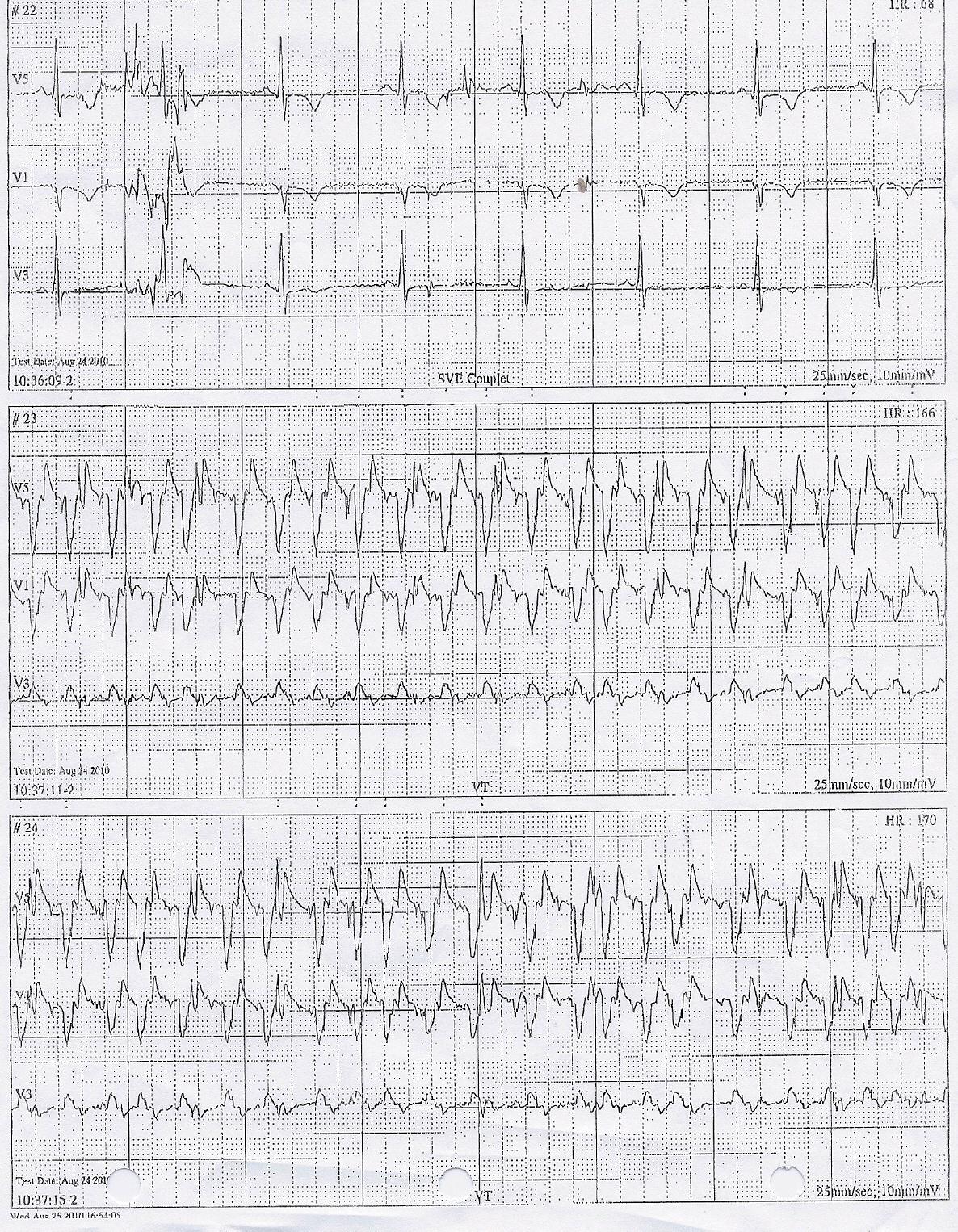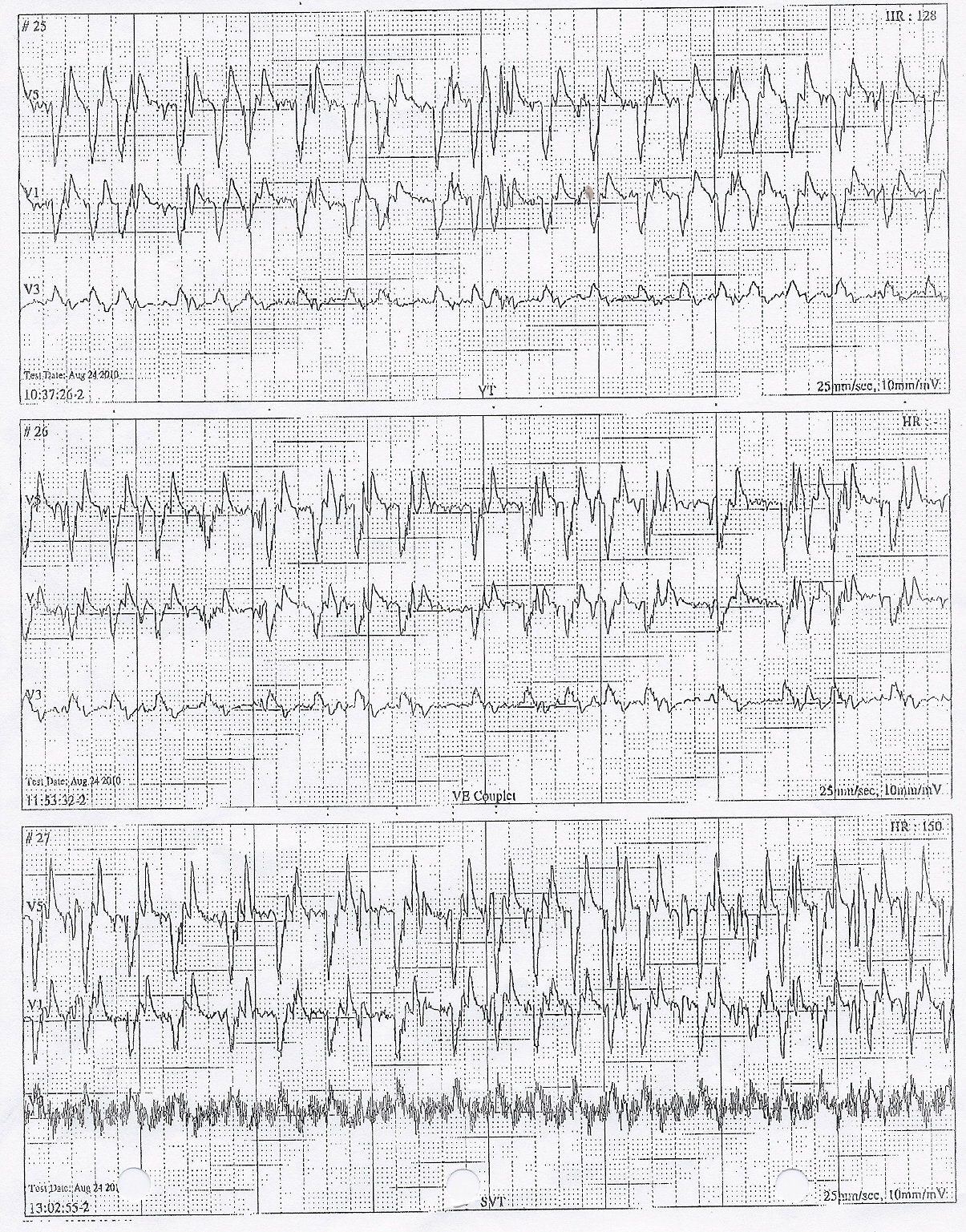He was just under 30 years of age and had the unfortunate circumstance of having a posterior myocardial infarction two weeks ago while on vacation out of state. Fortunately, it was properly diagnosed at the local hospital and he was rushed to the cath lab for stenting with relief of his symptoms.What's the rhythm?
All went well and he was discharged shortly thereafter.
A few days later he noted new palpitations, brief at first, then more frequent. He sought evaluation with the same local cardiologist that performed the stent procedure and a Holter monitor was obtained just before he returned home.
Just after he arrived home, the patient received a call from his cardiologist explaining that his Holter results were very concerning and recommending that he report to the closest Emergency Room for evaluation.
The cardiologist faxed the following tracings to the Emergency Department. You are called to see the patient and review the Holter tracings below:Click image to enlarge
Click image to enlarge
-Wes


AF
ReplyDeleteIs the second one v-tach with a re-entry pathway?
ReplyDeleteBob and Anony-
ReplyDeleteNo and no.
Hint: Try printing these tracings out - it might be easier to interpret that way...
Hmmm. Tough one.
ReplyDeleteSeveral more clues. A call was made to the cardiologist in attempt to see the onset of the arrhythmia or the offset.
"Too much artifact to see it clearly," he said. "I had to send you the clear tracings."
So there he is, a young patient who's scared to death and you're unsure of the weird-looking rhythm in a patient with a well-documented recent heart attack.
Decisions, decisions.
"Weird rhythm. Doesn't make sense."
Does that help?
weird rhythm, doesn't make sense -
ReplyDeleteexactly what my colleague and I thought.
Artifact?
Tried to see if his underlying sinus rhythm marched out thru the other tracings, but it didn't appear to.
My guess is sinus tach.
could it be an interference ? like a razor ?
ReplyDeleteAnonys 10:56PM and 01:34 AM -
ReplyDeleteCorrect. The patient's actual rhythm is probably normal sinus rhythm.
The tracings represent artifact from a lead dislodgement on the patient's Holter - an incredibly common occurrence, but one that does not always show such an ominous signal.
Clues to the presence of artifact are found in the noise on the first line of the tracing, highlighted on my edited version of the first faxed Holter page here. (I used the wonders of Photoshop to "borrow" the first line of the presumably "normal sinus" rhythm to placed it below a segment of the tracing demonstrates the underlying rhythm.)
There are other clues to this being artifact as well. Recall that the ST segment on the EKG is almost always smooth, and should not be perturbed unless an underlying signal overlies the segment (like a P wave or noise). Also, the "RR intervals" were too close to be physiologic (some examples of this are best seen on page two of the faxed Holter tracings). The heart simply cannot repolarize that quickly to ready itself for the next heart beat.
Sorry to offer such a curve ball, but this was presented just as I had encountered it, crummy signals and all.
Dang you, Doc! I was just now able to look at the EKG's and all I could see was artifact!! I would have guessed that!! (Seriously!) I love quizzes like this tho. Keeps me on my toes. :)
ReplyDelete